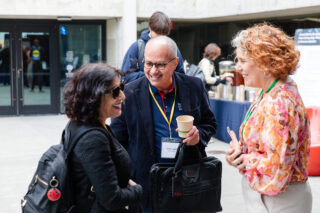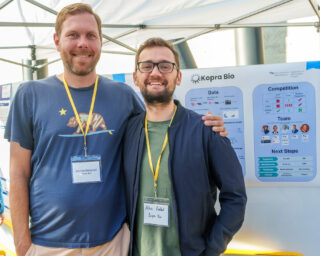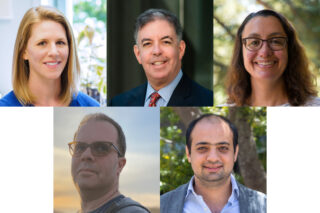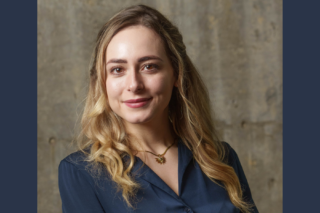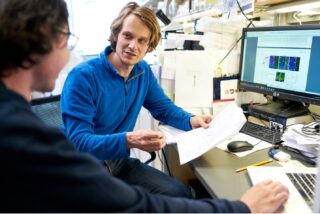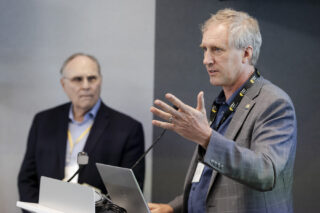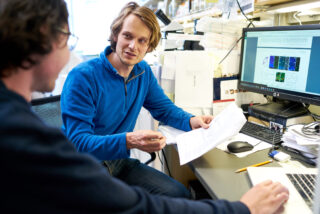Symposium Recap: Innovation in Autoimmune Therapies from Discovery to Translation
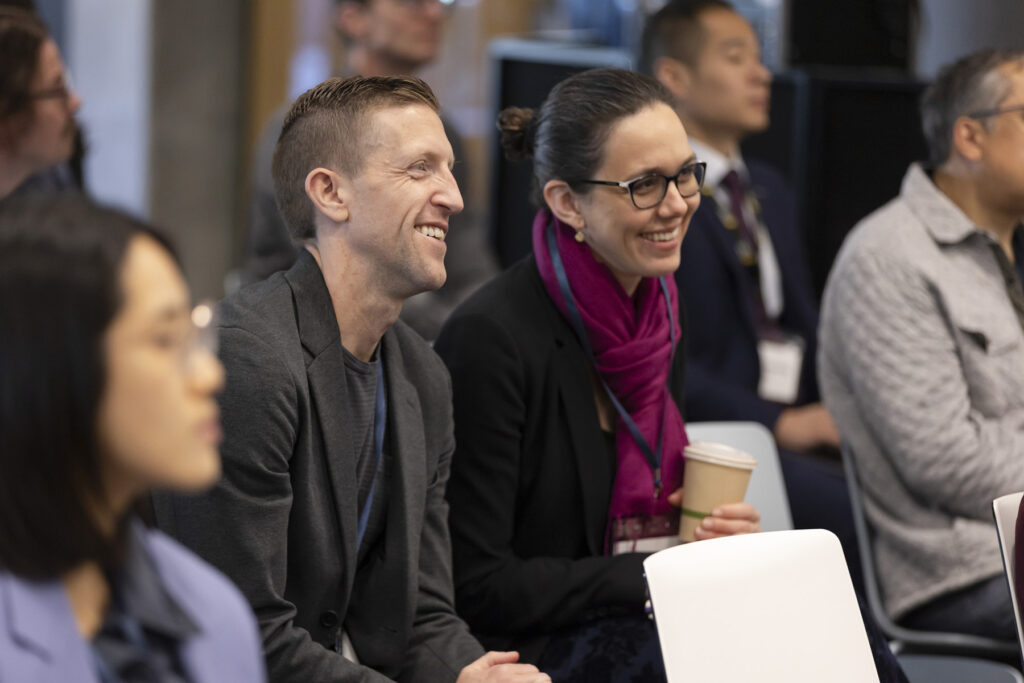
By Ruhani Chhabra.
What do autoimmune diseases—from lupus to rheumatoid arthritis—have in common? They are notoriously difficult to diagnose and treat. Both diagnosis and treatment represent huge unmet medical needs. That’s why QB3 brought together dedicated researchers, startup founders, and investors for “Innovation in Autoimmune Therapies from Discovery to Translation,” a symposium at Bakar Bio Labs this past Monday, March 24. We aimed to generate new ideas and connections that could lead to better treatments—and hopefully cures—for patients afflicted by these complex diseases.
“The University of California is an incredible organization with brilliant scientists and innovators,” says Dave Schaffer, a Berkeley professor of chemical and biomolecular engineering and director of QB3 and Bakar Labs. “QB3 is proud to help convene them to stimulate collaboration and progress towards improving human health.”
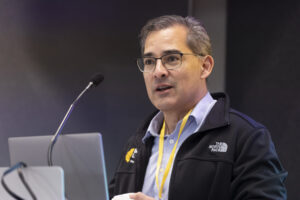
Following Schaffer’s introduction, the urgency of improving human health was underscored by a keynote speech from UCSF’s Mark Anderson and a presentation by UCSF immunologist Julie Zikherman. This session explored how studying rare diseases, such as autoimmune polyendocrine syndrome type 1, can generate insights that translate broadly across autoimmune conditions. Anderson called for a deeper intersection between academia and research, highlighting the UCSF AutoImmunoprofiler Consortium—an effort collecting patient samples for omic analysis to power drug discovery and development.
The next session, “Insights from Innate and Adaptive Systems in Autoimmunity,” focused on the interaction between genetics, immune signaling, and environmental factors like the microbiome contributing to autoimmune disease. Speakers showed how understanding disease-specific mechanisms can lead to targeted treatment design. UCSF’s Renuka Nayak showed how gut bacteria could be manipulated to reduce inflammatory arthritis in a mouse model. The panel agreed that to develop treatments that restore immune balance, the continued investigation of disease drivers is integral.
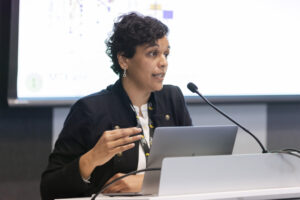
Session 3, “Leveraging Tools to Decode Disease Drivers,” highlighted the tools enabling such exciting discoveries—PhIP-Seq, organoids, and novel immune agonists. These platforms are helping researchers pinpoint the molecular culprits behind disease. As UCSF’s Joe DeRisi noted—“Each individual’s autoreactome is a snowflake!” This understanding was garnered from his use of PhIP-Seq and is especially key in unpacking autoimmune disease. This is because although healthy individuals have distinct autoreactomes, people with autoimmune disease have near identical autoreactive regions.
With new research and tools, companies from small startups to big pharma are working on advancing treatments for autoimmune disease. In Session 4, “Translating Discovery to Transform Autoimmune Disease Treatment,” speakers talked about innovations ranging from better diagnostics (Aqtual) to antibody manufacturing tools (Prellis and Lyric Bio) to new treatment targets (Genentech). The session concluded with Caribou Biosciences, a spinout from the Doudna lab at Berkeley (and launched through QB3), presenting its anti-CD19 CAR-T cell therapy for lupus—a trailblazing example of cancer immunotherapy repurposed for autoimmunity.

But as scientific breakthroughs inch closer towards clinical application, one critical question remains: how do we fund and scale these innovations? Session 5, “The Challenges and Opportunities of Investing in Autoimmune Innovation,” featured a panel of funders sharing their valuable insights on how no single player can tackle these diseases alone. This is the same critical point that Anderson mentioned earlier. The panel, moderated by Goodwin’s Maggie Wong, shared enthusiasm for several promising areas, including B-cell depletion therapies, improved oral drugs to boost patient adherence, and better delivery systems to ensure treatments reach the right cells and tissues.
This symposium is also helping to forge new directions for the QB3 Collaborative Research Program, which brings together large groups of principal investigators to take on big challenges that demand collective scientific effort. The program is led by QB3 Grants Coordinator Lise Barbé. “I am excited to follow up with the scientists to identify the projects and teams with which we can make the biggest impact on autoimmune disease research and therapies through collaborative research consortia,” she says. Her words reinforce QB3’s commitment to turning visionary ideas into transformative breakthroughs through the power of collaboration.
The symposium was conceived by QB3’s Katarina Klett, who also led the operations of the QB3 event team. She served on the planning committee along with faculty members Gregory Barton from Berkeley and Julie Zikherman from UCSF. We’d like to thank them for their leadership along with and all the speakers—Mark Anderson (UCSF Diabetes Center, Immune Tolerance Network), Maya Bader (Lupus Research Alliance), Tyler Chavez (Biogen), Joe DeRisi (UCSF, CZ Biohub), Josh Gertsman (Aditum Bio), Calvin Kuo (Stanford), George Kwong (Caribou Biosciences), Ena Ladi (Genentech), Maggie Louie (Aqtual), Averil Ma (UCSF), Melanie Matheu (Lyric Bio), Renuka Nayak (UCSF), Robert Saxton (UC Berkeley), Siquan Sun (Johnson & Johnson Innovative Medicine), and Maggie Wong (Goodwin)—for sharing their bold visions that are helping shape the future of autoimmune disease research and treatment!
The symposium was sponsored by Goodwin at the gold level; Kenneth Rainin Foundation and Johnson & Johnson Innovative Medicine at the bronze level; and the Lupus Research Alliance as supporting sponsor. We appreciate their financial support for this important event.
If you’d like to learn how to get involved in future QB3 symposia, please contact Katarina Klett.




